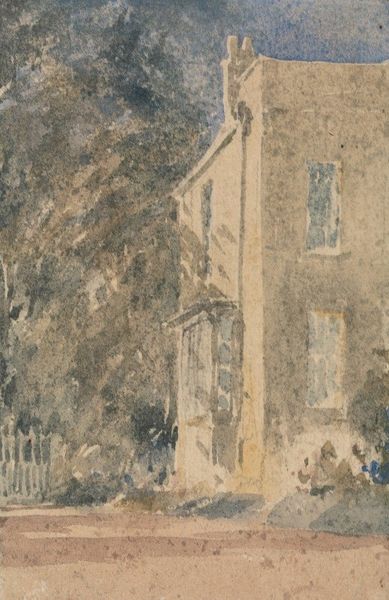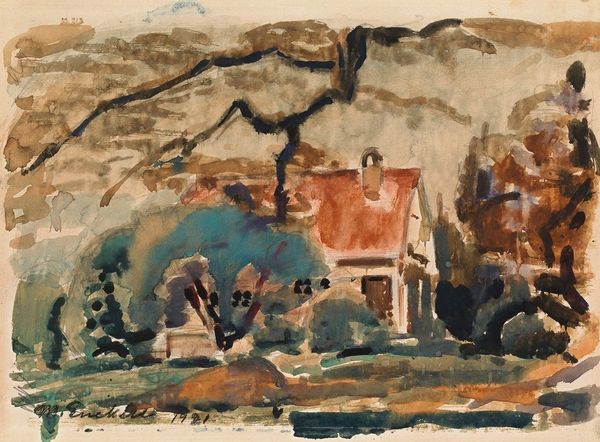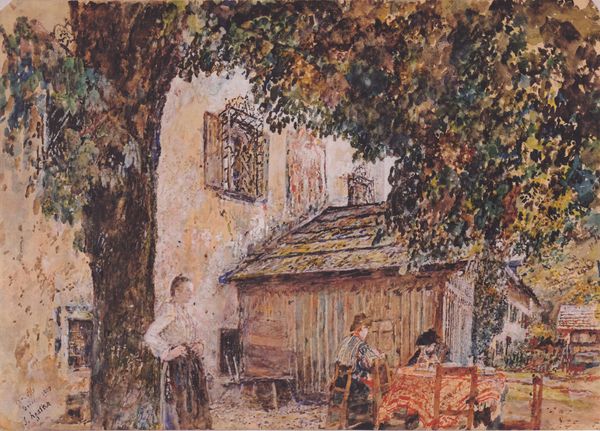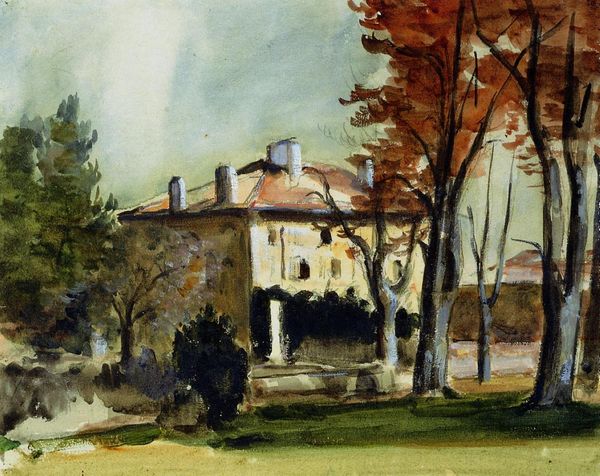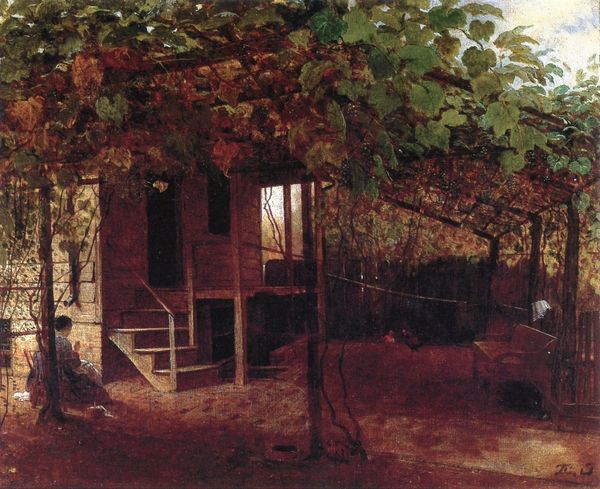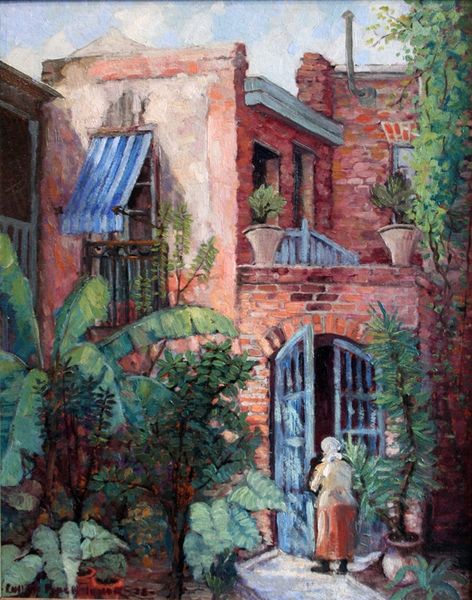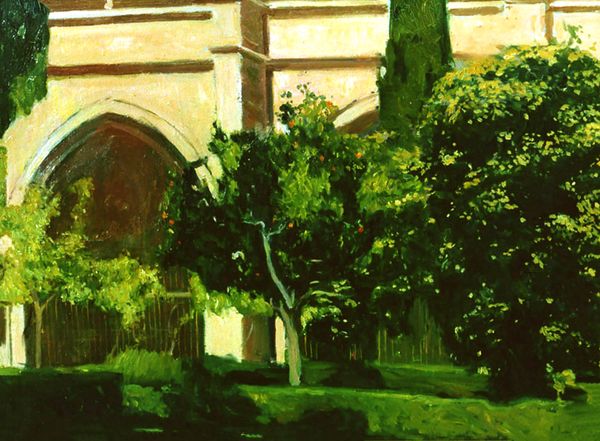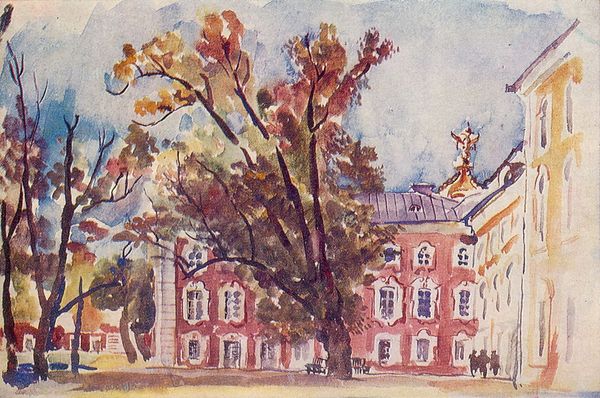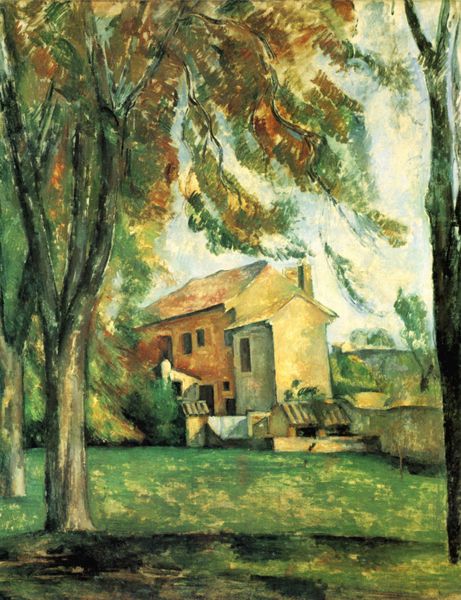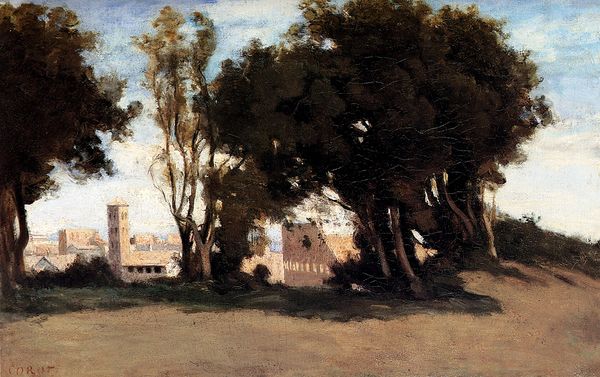
painting, watercolor
#
painting
#
arts-&-crafts-movement
#
landscape
#
oil painting
#
watercolor
#
folk-art
#
cityscape
Copyright: Public domain
Curator: This is Walter Crane's "Red House, Bexleyheath", a watercolor sketch of a building that encapsulates the ideals of the Arts and Crafts movement. What strikes you about it at first glance? Editor: I'm immediately drawn to the light. It’s like a filtered memory, suffused with warmth but also a slight melancholy. The palette, leaning heavily into reds and browns, makes it feel incredibly intimate and human. Curator: Absolutely. The painting captures Red House, the home designed by Philip Webb and William Morris, a space conceived as a rejection of industrial, mass-produced aesthetics in favor of handcrafted beauty and a return to pre-industrial values. Crane, through his distinctive folk-art style, emphasizes this intention. Editor: Knowing its context shifts the perspective. It's no longer just a house but a manifesto! This depiction challenges the rigid class structures reflected in Victorian architecture by highlighting simple living and nature. Note that, by implication, we are speaking about whose nature, and whose ability to have "simple living". Curator: Exactly. Crane's emphasis on the textures of brick and foliage can be read as a statement against the cold anonymity of industrial production. Even the social atmosphere, people chatting by the building in the shadows, invites discussion. What kind of conversation might these folks be having, especially if they represent this challenge? Editor: Maybe they're discussing socialism or debating how art can truly serve society and create real change for workers... There are people at that well and inside. Who has access? Who feels comfortable? Are women represented here at all? Curator: Those are key points to raise. We have to think critically about how those utopian visions actually played out and consider that not all people were afforded equal access to spaces and movements such as those linked to the Red House. Editor: Despite those historical caveats, the work has value as a visual artifact: The image of Red House, captured here by Crane, represents that attempt to link art and life, craft and community, it invites reflection about our own lived spaces, even if access and labor still determine the power dynamic around us. Curator: It really does invite a broad perspective shift, doesn’t it? I feel the need to understand art's impact in terms of buildings, structures, or social settings after really taking it in.
Comments
No comments
Be the first to comment and join the conversation on the ultimate creative platform.
